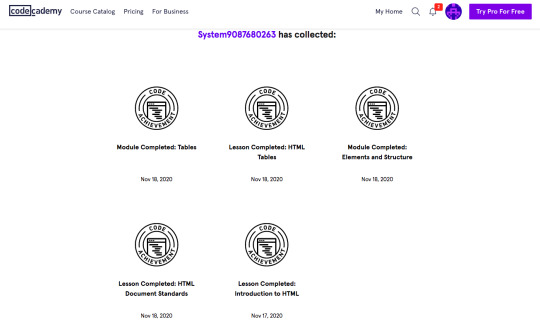Text
What are Cookies?
Cookies are the small pieces of code that embedded on your computer through your browser by the servers of the websites you visit, this can recognize your identity and record your online actions.
There are two types of cookies:
o First party: authentication as it recognizes your identity and remember key information of you to provide a better user experience
o Third party: ‘tracking’ and online advertising purpose, this can track your movement across the web.
The first-party cookie is only accessible via the domain that created it, but third-party can be access on any website that embedded the third-party server’s code. The third- party data is stored in data brokers where it contains all the information about articles and journals we have read, the sites we visit, what we have watched and purchased online, and almost every activity we have engaged online.

Our data is then placed into segments on marital status, income, sexual orientation and etcetera. With this collected information, the websites will sell their space to advertisers based on the precise characteristics of site visitors. Moreover, the Real-time advertising auctions allow ad agency to buy ad space and display their ad at precisely the moment that web surfer who are known to fit the desired profile (there are10 millions of ad. Spaces are available per second!)
0 notes
Text
Building an Online Identity
An online identity is “a social identity that an Internet user establishes in online communities and websites”. [Wikipedia] To build an online identity, one thing to keep in mind: be authentic-self online as it is the best practice of social media engagement. However, you can be authentic precisely: build the online identity that reflects best of you and keep some of your private life private. Simply put: Think twice, post once.

Make sure to filter your information, since the materials you posted online may exist forever and may always searchable. Online identity allows people to express their personal feelings and show different sides of their personalities on different platforms. For examples, Facebook builds a personal image that is usually shared among friends and families; LinkedIn builds professional image that is usually used for job-seeking or professional engagement activities; Twitter, can be both personal and professional where you make posts to the public about your opinions and thoughts on social issues.

Building an online identity through these social media platforms helps people to understand you better. Moreover, online identity shapes people’s interpersonal perception through their posts and their public personal information. People often recognize your virtual online identities as a part of your real-life identities and use it to verify and validate your identity.
See link: https://libguides.dickinson.edu/c.php?g=415608&p=2832277
0 notes
Link
https://www.kaushik.net/avinash/digital-marketing-and-measurement-model/
0 notes
Text
CODE CADEMY - Learning HTML

1 note
·
View note
Text
Elevator Pitch
Elevator Pitch, refers to the 30 seconds to one minute spent in the Elevator to introduce oneself, tell one's strengths, and successfully attract others. Elevator pitch is not in the Elevator most of the time, and it can be used for communication in the day and the beginning of self-introduction in career fair. The way I have come up with a short self-introduction elevator pitch is according the following steps:
1. Introduce your Destination.
2. Tell your Background Story.
3. Connect the Dots!
The first step is the purpose, where you have to explain what you want to accomplish by introducing yourself to others. This is a forward-looking process, and the person you are introducing yourself to should be the person you will interact with in the future. It's easier to get the other person's attention if you start with a straightforward purpose.
The second step is your background story, you should tell about your background and the things you are proud of to prove that you are capable of doing the job. This is a process of looking backwards. It's also important to tell a story that relates to the point you were trying to get through, so you can consider asking yourself two questions: Why are you a compelling candidate? How/Why are you qualified for the position? When answering this question, think in terms of hard and soft skills. What do you know about technology? What kind of internships and related experiences do you have?
Since I am currently looking for an internship related to Digital Media (Marketing), I wrote the following elevator pitch regarding this.
“Hi. My name is Mary and I'm very interested in a winter internship (Destination) in Digital Marketing. (Story)I have always followed the current hot topics and make some valuable work based on it. I'm also running my own Social Media accounts with different types to see which one works better.(connect the dots)I’d love to spend a winter in Digital Marketing to test out my technical skills and see if I'm a good fit for the industry. I think my strong execution skills and interest in the markets make me a great candidate.”
1 note
·
View note
Text
DISCONNECT TRACKING!
See what sites are tracking on you when you are doing an online shopping on Amazon?

1 note
·
View note
Text
Privacy and Security in the Online World - CEID100 Final project proposal: https://youtu.be/I4z7oRmV-6A
youtube
1 note
·
View note
Text
10 Useful Search Tips to Google Efficiently
1. Search for an exact word or phrase
Put your word or phrase in the quotation mark: “____”
e.g.) “dog”
2. Search for something on a specific site
Type site: + website you want + a single space + search phrase: site:website ____
note: there is no need to use the http// or www., however, you must include the domain name such as .com.
e.g.) site:toronto.ca covid-19
3. Search for a definition correctly
Type define + colon + term: Define:term
e.g.) define:bookmark
4. Search for a specific product available within a specific price range
Type product + $price + two periods + $price: product $__..$__
e.g.) phone case $10..$40
5. Search for a specific filetype like .GIF, .DOC, .PPT, etc.
Type file + the word “filetype” + colon + filetype: file filetype:___
e.g.) phone case filetype:ppt
6. Include or ignore words in the search
Include: put + operator in front of the word: +___ (this usually happens in the “stop” words: “and” “the” “how”)
e.g.) +how
Ignore: put - operator in front of the word: -___
7. Find sites/pages similar to an existing one
Type Related + colon + site: Related: ___ (note: a single space after colon)
e.g.) Related: www.toronto.ca
8. Confirm the exact form of a quote even if you were missing some of the words
Use an asterisk (*) within the quote for the missing words.
e.g.) Cross the * and * to meet yourself better. (Cross the stars and moon to meet yourself better.)
9. Search for pages containing two connected words
Type AND between the two words: ___ AND ___
e.g.) tea AND coffee
10. Search for social media content containing a specific tag
Put a hashtag (#) before your tag: #_____
e.g.) #Torontofood
0 notes
Text
As an individual, social media and social life become an indispensable part in most people’s everyday lives. You may not realize the importance of social media. Many individuals opened a social media account to be a looker-on and became the silent majority.
A detail social media best practices with different platforms is described in the following link:
https://communications.tufts.edu/marketing-and-branding/social-media-overview/social-media-best-practices/
After I read the article carefully, I got a clear and general list of social media best practices:
1. Select an appropriate social media platform: different platform has different impacts and methods to operate (Facebook, Instagram, Twitter, Tumblr, etc.).
2. Listen to your users and monitor trends: monitor daily to obtain relevant keywords that refer to your interests or others, and search for keywords to see user reviews.
3. Consistent image and prompt response: Every time we talk to others online, post and reply to messages, we are spreading the voice of your personal image and setting.
4. Follow the social media rules: different social media has different rules, make sure you do not violate them.
5. Avoid "similarity" and set a release date and cycle: customize some information for the account, so that fans can see how you are different from others. Also, set a posting cycle to keep you followers up to date.
6. Review and summary: Review you post’s effects with respect to the page view, click rate, comments, changes in number of followers, etc., and adjust the strategy according to the results.
With these best practices on social media accounts, one can build his/her personal brand eventually, and it is the personal identity at this time as well. Moreover, the individuals can upgrade his/her skills and products continuously.
1 note
·
View note